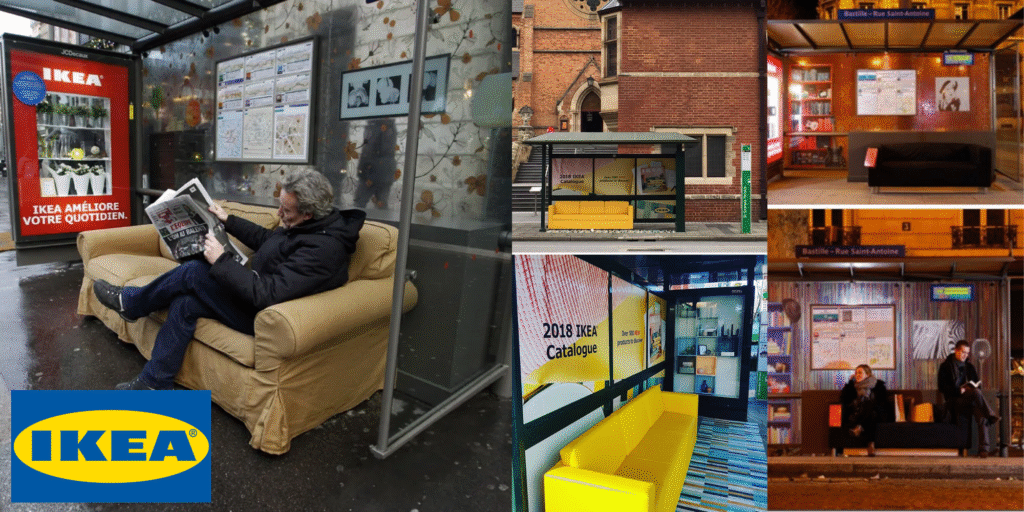
What if your daily commute suddenly felt like a visit to your living room? That’s exactly what IKEA did—and most of us never heard about it.
IKEA’s guerrilla marketing tactics have a knack for transforming mundane public spaces into immersive brand experiences. One such campaign—quietly executed across European cities—placed full living-room setups inside subway and bus stops. Sofas, lamps, rugs and even a backdrop featuring IKEA’s catalogue interiors made daily waits unexpectedly cosy. The world passed by unaware of this clever blend of advertising, ambient marketing and experiential interaction.
Bringing showrooms to commuters
In 2010, IKEA launched its “Moving Day” campaign at Gare de Lyon in Paris. Entire train platforms were turned into mini showrooms: couches set up for sitting, shelves for browsing, lamps for lighting, all branded and catalogued—giving commuters tangible glimpses of home comfort in transit hubs. Similar installations followed in Sydney and Perth, with living-room setups replacing typical bus-stop seats
.
By placing these immersive environments in high-traffic public spaces, IKEA shifted advertising from passive billboards to interactive experiences. Commuters could relax, try products, and picture them in their own homes—all while waiting for transport.
Strategy behind the stunt
Create surprise through ambient marketing
The unexpected placement of home furnishings in bus stops and metro stations creates a delightful shock. Such ambient ads spark curiosity and photo-sharing—particularly on social media—expanding reach organically.
Let customers experience brand promises
Rather than talk about comfort, IKEA let people sit and feel it. The functional demonstration underscored product quality, building trust through tactile engagement.
Maximise against tight budgets
True guerrilla marketing thrives on creativity, not big budgets. These installations were strategic investments with high ROI: they attracted media coverage and social buzz without the costs of large-scale outdoor advertising.
Impact and cultural relevance
Commuters snapped pictures, catalogues flew off shelves at stores, and conversations followed online. The campaigns reinforced IKEA’s brand promise—stylish, affordable, functional—while showcasing innovation in placement and media use . They also provided a roadmap for smaller businesses looking to disrupt traditional advertising through public space activations.
IKEA’s guerrilla campaign reminds us that marketing doesn’t always require giant budgets or rocket science. By installing living rooms in everyday spaces, they effectively brought their brand into people’s daily routines—surprising, delighting and engaging them in a moment of pause. It’s a creative blueprint for marketers seeking maximum impact with minimal spend.

